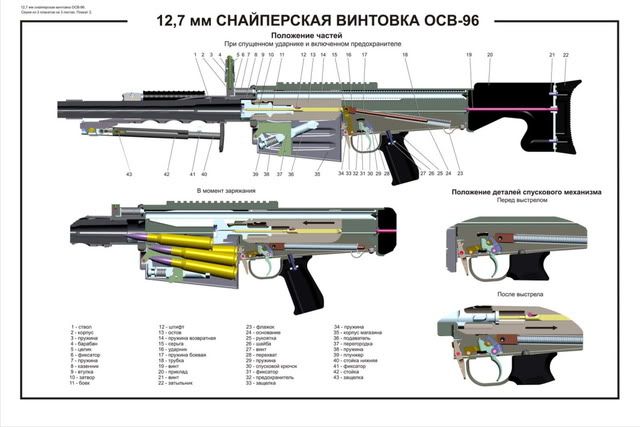- Biển số
- OF-302370
- Ngày cấp bằng
- 20/12/13
- Số km
- 11,347
- Động cơ
- 73 Mã lực
(Tiếp)
These lightening cuts lighten the weight of the milled receiver making the rifle slightly more comfortable to carry for extended periods. In the field every little bit helps! Current production Russian Dragunov receivers are completely flat on the outside which provides extra regidity to allow the use of more powerful calibers.

Chinese trigger group with the hammer forward in the fired position. This assembly is removable to facilitate easy cleaning and maintenance.

The hammer is back in the cocked position.

Russian military trigger group from captured SVD in Iraq. Looking from the top you can see the 2-stage trigger assembly. It is quite different from the Kalashnikov design.

There is a rumor that the safety sear had to be removed on Dragunov Tiger before they could be imported to the US because it was considered a class 3 part.

Though the US government might classify the sear (#6 in the diagram) in the same category as machine gun parts, the Dragunov is not capable of firing full-auto. The sear is actually an added safety device designed to prevent the possibility of the rifle firing a bullet before the bolt is locked into battery.

In comparing magazines from the Russian 7.62x54R version (on right) with the Chinese .308 version you can see there are several differences. At right are the front end tabs which hook into the recess cut in the front of the magazine well of the SVDs receiver. Note the Russian tab design is taller.


Front tabs in profile. The Russian magazine has a curved body because that is the only way to feed a rimmed cartridge reliably.

From the bottom you can see the most dramatic design difference. The Russian magazine body has a hexagonal shape which is tapered at the front. The magazine well on the Russian SVD receiver is similarly shaped. The Chinese .308 NDM-86 magazine is a more traditional box-type design with straight sides and a receiver magazine well to match. These magazines are in no way interchangeable.
These lightening cuts lighten the weight of the milled receiver making the rifle slightly more comfortable to carry for extended periods. In the field every little bit helps! Current production Russian Dragunov receivers are completely flat on the outside which provides extra regidity to allow the use of more powerful calibers.

Chinese trigger group with the hammer forward in the fired position. This assembly is removable to facilitate easy cleaning and maintenance.

The hammer is back in the cocked position.

Russian military trigger group from captured SVD in Iraq. Looking from the top you can see the 2-stage trigger assembly. It is quite different from the Kalashnikov design.

There is a rumor that the safety sear had to be removed on Dragunov Tiger before they could be imported to the US because it was considered a class 3 part.

Though the US government might classify the sear (#6 in the diagram) in the same category as machine gun parts, the Dragunov is not capable of firing full-auto. The sear is actually an added safety device designed to prevent the possibility of the rifle firing a bullet before the bolt is locked into battery.

In comparing magazines from the Russian 7.62x54R version (on right) with the Chinese .308 version you can see there are several differences. At right are the front end tabs which hook into the recess cut in the front of the magazine well of the SVDs receiver. Note the Russian tab design is taller.


Front tabs in profile. The Russian magazine has a curved body because that is the only way to feed a rimmed cartridge reliably.

From the bottom you can see the most dramatic design difference. The Russian magazine body has a hexagonal shape which is tapered at the front. The magazine well on the Russian SVD receiver is similarly shaped. The Chinese .308 NDM-86 magazine is a more traditional box-type design with straight sides and a receiver magazine well to match. These magazines are in no way interchangeable.


































